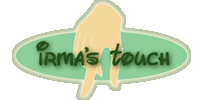Sciatica is pain resulting from irritation of the sciatic nerve. The sciatic nerve is the largest nerve in the body and begins from nerve roots in the lumbar spinal cord in the low back and extends through the buttock area to send nerve endings down the lower limb. Sciatica pain is typically felt from the low back to behind the thigh and radiating down below the knee. The leg pain usually goes past the knee and may go farther to the foot, the pain is usually a shooting pain, like electricity . Sometimes, weakness in the leg muscles occurs with sciatica. It can also burn like fire or tingle much like the feeling when your leg “goes to sleep” , the pain can range from slightly annoying to totally unbearable. Some people have pain in one part of the leg and numbness in another part of the same leg.
Pain from sciatica often limits your activities. Here are some advice for sciatica :
- Do not bend, lift, or sit in a soft, low chair; your pain will get worse.
- Try a cold pack to see if it helps the pain. If you don’t have a cold pack, use a large bag of frozen vegetables; it makes a good first aid cold pack. After the cold compress/ massages, try alternating with heat , preferably moist heat.
- You may feel better lying on your back on a firm surface with a pillow under your knees. Another option is lying on your side with a pillow between your knees to keep your back straight. Also, you might find that a recliner chair is helpful.
- Take it easy, but do not lie in bed for longer than two days because this has been shown to actually worsen the condition. Do activities you are able to tolerate, and do not expect to feel better overnight.
Piriformis syndrome is irritation of the sciatic nerve caused by compression of the nerve within the buttock by the piriformis muscle. Typically, the pain of the piriformis syndrome is increased by contraction of the piriformis muscle, prolonged sitting, or direct pressure applied to the muscle. The piriformis syndrome can cause difficulty walking due to pain in the buttock and lower extremity.
The piriformis syndrome is one of the causes of sciatica.
The piriformis muscle begins at the front surface of the sacrum (the V-shaped bone between the buttocks at the base of the spine) and passes through the greater sciatic notch to attach to the top of the thigh bone (femur) at its bony prominence called the greater trochanter. The gluteus maximus muscle covers over the piriformis muscle in the buttocks.
The piriformis syndrome is treated with rest and measures to reduce inflammation of the piriformis muscle and its tendon. Treatments include, myo therapy ( medical massage ), piriformis stretching exercises, physical therapy, anti-inflammatory or/ and pain medications. With persistent symptoms, further treatment can include local injection of anesthetic and cortisone medication. Rarely, for severe cases, surgery is performed to relieve the pressure irritating the sciatic nerve. During surgical operations, the piriformis muscle is either thinned, elongated, divided, or removed.
Sooner rather than later , consult your primary health care . Medical Massage is always good to help relieve the pain.
Call Irma’s Touch for appointment
Any comments and/ or Topic ideas … ? please share .
Visit Irma’s Touch page on facebook

